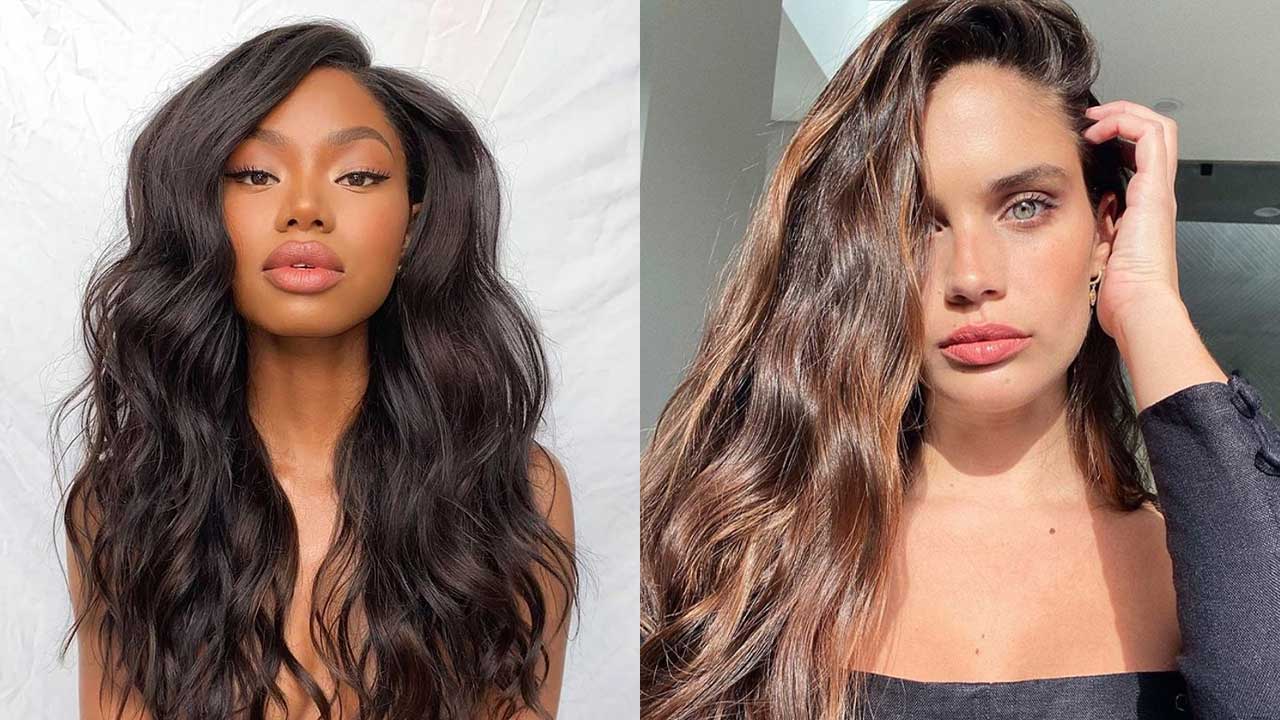Styling curly hair is one thing—identifying your curl type is a whole other ball game. While it can seem intimidating at first, figuring out your curl type is actually pretty easy when it is broken down into this unofficially official guide to curly hair.
A quick intro to curl types
This classification system, originally created by Andre Walker breaks down curls into types and subtypes. To start, there are four types of curl types ranging from Type 1, Type 2, Type 3, and Type 4. The number refers to the four main curl families, where the ABC’s of curls point to how tightly wound your curls are. Still with us? So in turn, Type 1s are those who have naturally straight hair, while Type 2s are our wavy-haired ladies. 3s are those with spiral curls and 4s are the infamous kinks and coils.
Now that we’ve sorted out the types of curl patterns, let’s dive into each type and subtype in-depth so you can not only get a better understanding of your curl type but also find the types of products and styles to suit your hair needs.

Types of curly hair
Type 1 (Straight)
As mentioned before, Type 1 is pretty much the absence of a curl—in other words, poker straight. This curl type technically shouldn’t be considered as a curl, however, it is just the beginning of the curl type system.
Type 2 (Wavy)
When it comes to wavy hair, the texture falls between straight and curly. This type typically lays slightly flat and straight at the root and falls into a definitive S pattern. Your hair can be fine or thick and it usually straightens and curls easier than the other curl types. It’s the curl type that normally dries naturally wavy with minimal product and knows how to hold heatless waves with a little help from damp hair and a braid.
Type 2A
Those with Type 2A hair have a loosely tousled texture with fine strands that are easily weighed down. It could pass off as Type 1 hair except that is has the slightest wave at the ends. Those with this texture want to stay away from the use of heavy styling products such as leave-in conditioners and heavy creams. A lightweight mousse and a sea salt spray are just what you need to add volume and texture without turning your hair greasy and limp.
Type 2B
Lying flatter at the crown, 2B hair has more defined waves that start mid-length. Hair is thicker than 2A and it is slightly more difficult to style due to all the frizzies around the top of the head and the fact that you have more hair to work with. You’re gonna have to put a little more effort into straightening your hair but if you want to enhance your natural waves you can do so with these heatless tricks.
Type 2C
Rounding up Type 2, 2C waves start right at the root and have a definite S-bend. With a few well-wound ringlet curls to them, this type of hair is thicker with a frizzier texture. To best way to take care of 2C hair is by avoiding over-washing because it will dry out your hair, cause breakage, and it will not combat the infamous frizz. Try washing your hair 2-3 times a week with a lightweight shampoo and by adding a little leave-in conditioner into your routine will do wonders for this curl type, especially when using a diffuser.
Type 3 (Curly)
Type 3 curls are the curls every girl with straight hair wishes they could have. It’s what people think of when they picture traditionally curly hair. Ranging from loose and fluffy curls to defined and bouncy ringlets, these curls form perfect loops with tons of volume from root to end and are seriously every girl’s voluminous dream.
Type 3A
Fact: 3A curls can be cheeky little shape-shifters. These curls are typically shiny with large loose curls that are about the size of a wine cork. 3As can easily have their hair blown out and styled, but the fine strands make the curls very reactive to fluctuating weather. So if it’s slightly humid, too dry, or if the stars don’t align perfectly, you will be attempting to tame a lion mane for most of the day. These curls are best styled when your hair is sopping wet. To settle frizz and define your curls, apply a curl-defining cream and rake through your hair with a wide-tooth comb for even distribution. For best results, use your hands and scrunch your hair with a cotton tee until you reach your desired shape.
Type 3B
As we move along, you’ll start to notice these curl types getting tighter and tighter. 3B curls are coarser and springier then 3A curls. These curls are usually the size of your index finger and can easily wrap around it. This hair texture is a little more on the drier side but it knows how to hold volume and no matter how much you play with these curls, they are here to stay. The most important thing for 3Bs are focusing on hydrating your curls. You will want to layer a cocktail of moisturizing and anti-frizz creams to enhance, protect, and add tons of shine.
Type 3C
Now we’re moving towards tight corkscrew curls. 3C curls are about the size of a straw and pack a density punch. Even though these curls are tightly packed together (giving your hair some serious volume) they tend to have a finer texture which results in loss of definition. A mixture of oils and creams and knowing how to properly care for your curly hair will do wonders for your tedious curls.
Type 4 (Coily)
Type 4 curls are kinky, coily, and tight. These curls are usually not well-defined when wet and when it dries, they tend to shrink and turn thick and fluffy. Naturally very dry with a spongy texture, Type 4s are the most fragile type of them all. Strands are extremely tight and hold very small curls right from root to end.
Type 4A
Those with 4A curls have the tightest, smallest coils/curls and follow a well-defined s-pattern. They usually retain moisture better than the other Type 4 hair and experience the least amount of shrinkage. As you know by now, your coils need serious moisture to keep them healthy and bouncy, especially if you’re a fan of wash-and-go styling. The trusty moisture combination of oils, creams, and gels will help maximize your coily texture. You can also define 4A curls with the classic hand scrunching technique for optimal results.
Type 4B
Moving away from the standard S pattern, 4Bs (and C) are actually in a class of its own. These strands are densely packed and bend in a zigzagged Z shape. About as wide as a spring from the inside of a ballpoint pen, these coils can either have a fine or coarse texture and is the curl type that is most prone to moisture loss, shrinkage, and breakage. This means your hair can handle rich formulas so don’t be afraid to load up on leave-in conditioners and creams. The best way to apply them is to section your wet hair and apply the product from root to end while curling each section around your finger to shape and define.
Type 4C
Similar to 4B, 4C curl types have one distinct difference being that the zigzag pattern that they share is much more tighter. This means that the strands are a lot more fragile and it is the curl type that experiences the most amount of shrinkage out of all of the other types. 4Cs tend to be extremely delicate and often lead to breakage and yup! you guessed it...loss of moisture. The most important thing is to cover your hair from root to end with hydration and being very gentle when it comes to styling. You are going to want to gently and slightly pick-out your hair while applying a leave-in oil or cream to maximize your moisture retention. It’s all about in the way you massage—softly and delicately.
So that’s that! Now that we’ve decoded your curl type you can properly take care of your curls and actually identify the type of curls you didn’t realize you had. It’s safe to say that we all know that your hair can hold several different textures and it can be so difficult to somehow make everything look cohesive when styling it. So, hopefully, you can go forth and test some of these tips on yourself to master that head of hair you had no idea had a type.
If you're still unsure of what your curl type is, take our quiz below!

